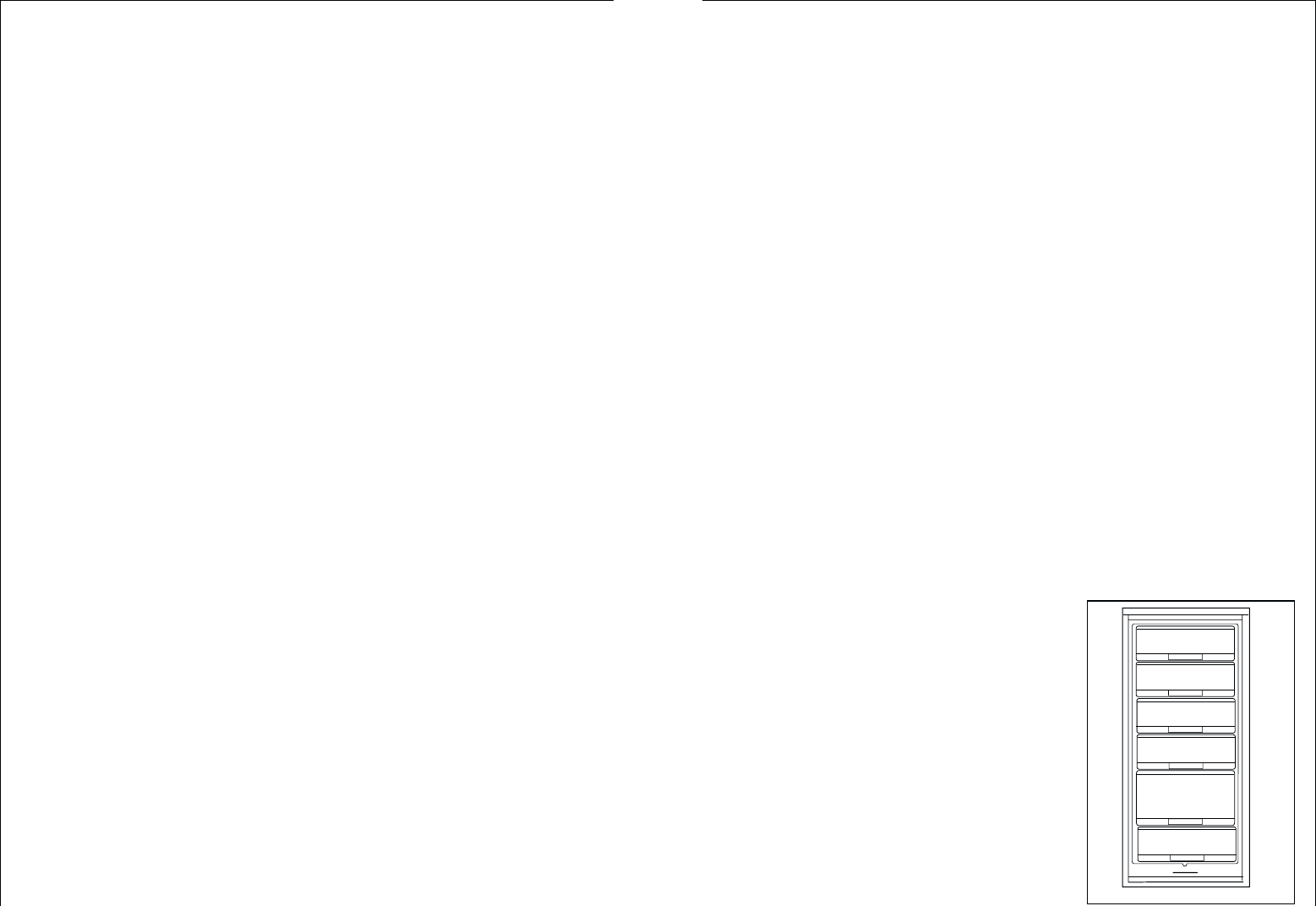
28
The red temperature pilot-lamp (A) blinks when:
– the appliance has been started up but the storage temperature has not
yet been attained;
– the minimum storage temperature is no longer being maintained (fault);
– excessive amounts of fresh food are placed inside; or
Important note: if you operate the fast-freeze switch or adjust the tempe-
rature regulator, it may happen that your appliance’s refrigeration motor
does not start immediately but only after some time. This does not mean
that your appliance has a fault.
Starting up and temperature regulation
Please clean the appliance interior and all accessories prior to starting the
appliance. Plug in the appliance at the mains supply.
• Turn the ON/OFF knob (E). The green lamp (D) comes on.
• Turn the temperature regulator (E) in the direction of „1“.
• To reset the sound alarm push the botton (C) and the alarm light (A) blinks
until the reaching of the storage temperature .
• Operate the fast-freeze switch (C). The yellow pilot lamp (B) comes on by
pressing the switch (C) again .
• Only when the red lamp (A) has gone out should you reset the fast-free-
ze switch (C) the yellow light (B) goes out by pressing the switch (C) again.
Setting “0”: Off.
Setting “1”: Hightest temperature, (warmest setting).
Setting “4” (end-stop) : Lowest temperature, (coldest setting).
The exact setting should be chosen keeping in mind that the temperature
inside the appliance depends on:
- the quantity of food stored
- how often the door is opened
- ambient temperature
Important:
Regularly check on the red temperature pilot lamp (A) that the required sto-
rage temperature is being maintained.
29
Freezing and storing frozen food
You can use your freezer for freezing fresh food yourself.
Important!
• The temperature in the freezer compartment must be –18 °C or colder
before freezing food.
• Please observe the freezing capacity given on the rating plate. The
freezing capacity is the maximum quantity of fresh food that can be
frozen within a period of 24 hours. If you wish to freeze food several
days in a row, please observe a maximum capacity of only 2/3 to 3/4
of that on the rating plate. The quality of the food is best preserved
when it is frozen right through to the core as quickly as possible.
• Allow warm food to cool down before freezing. The warmth will cause
increased ice formation and increase the power consumption.
• Please note the maximum storage times specified by the manufacturer.
• Thawed foods which have not been processed further (cooked into meals)
may not under any circumstances be frozen a second time.
• Containers with flammable gases or liquids can leak at low temperatures.
There is a risk of an explosion! Do not store any containers with flamma-
ble materials such as, for example, spray cans, fire extinguisher refill car-
tridges etc in the refrigerator/freezer.
• Bottles and cans must not be placed in the freezer. They can burst when
the contents freeze, high carbonate content drinks can even explode!
Never store lemonade, juices, beer, wine, sparkling wine etc. in the free-
zer. Exception: high alcohol content spirits can be stored in the freezer.
• All foods must be packed air tight
prior to freezing, so that they do
not dry out or lose their flavour,
and so that no flavour contamina-
tion of other frozen goods occurs.
Caution! Do not touch frozen food
with wet hands. Your hands could
freeze to the food.
1. Place the packed food in the drawers.
Place food to be frozen As shown in
figure. Unfrozen food must not tou-
ch items already frozen, otherwise
the frozen food could begin to
defrost.
10 kg
10 kg













